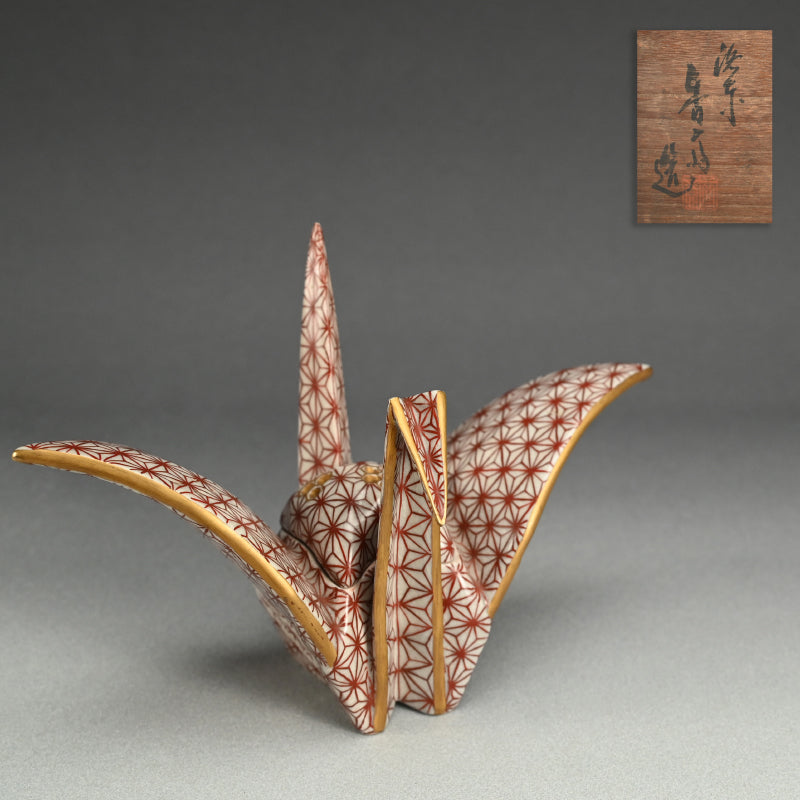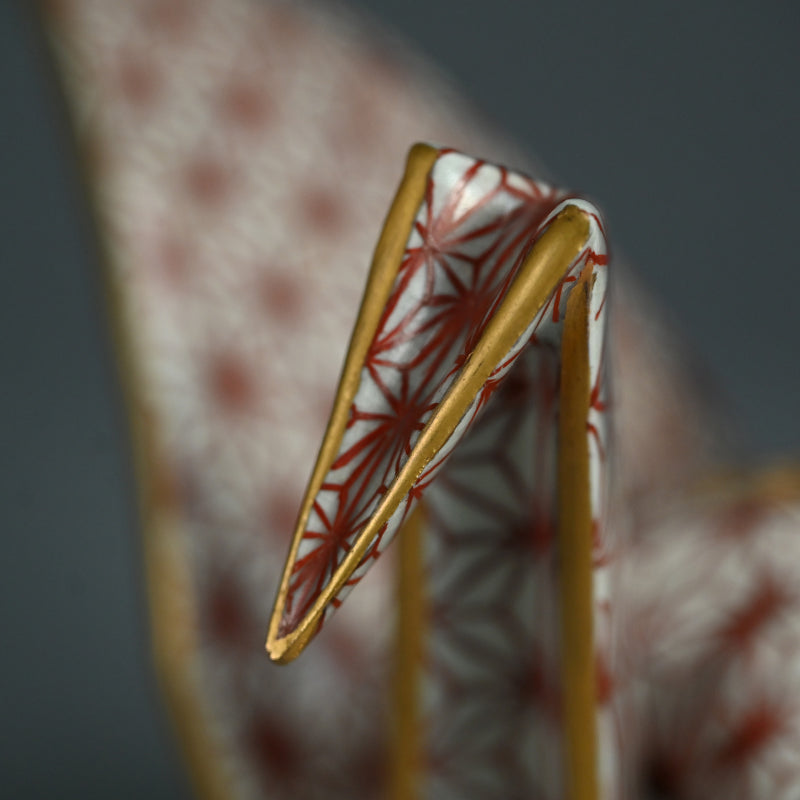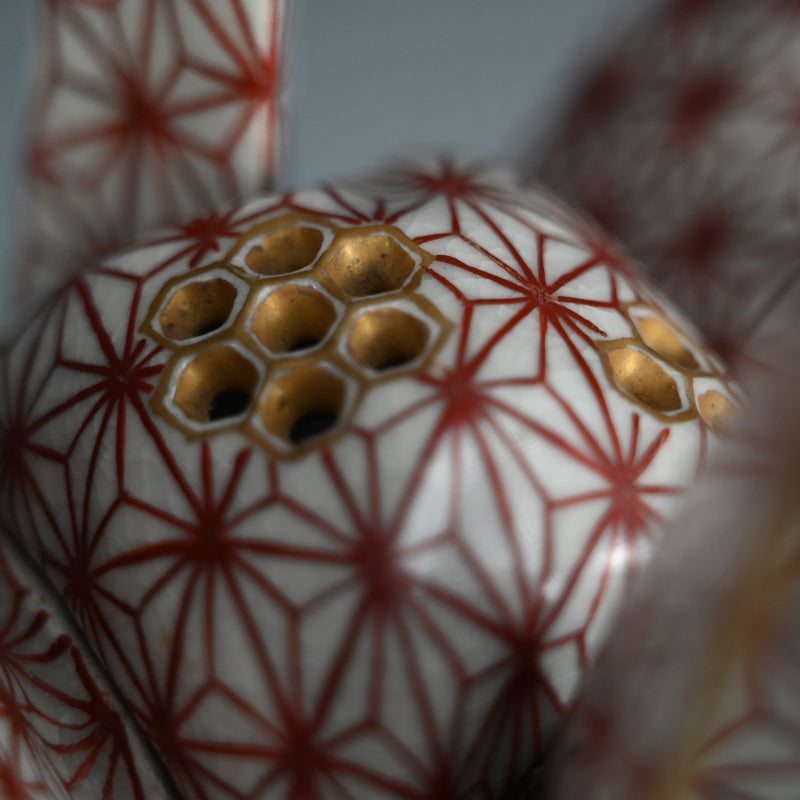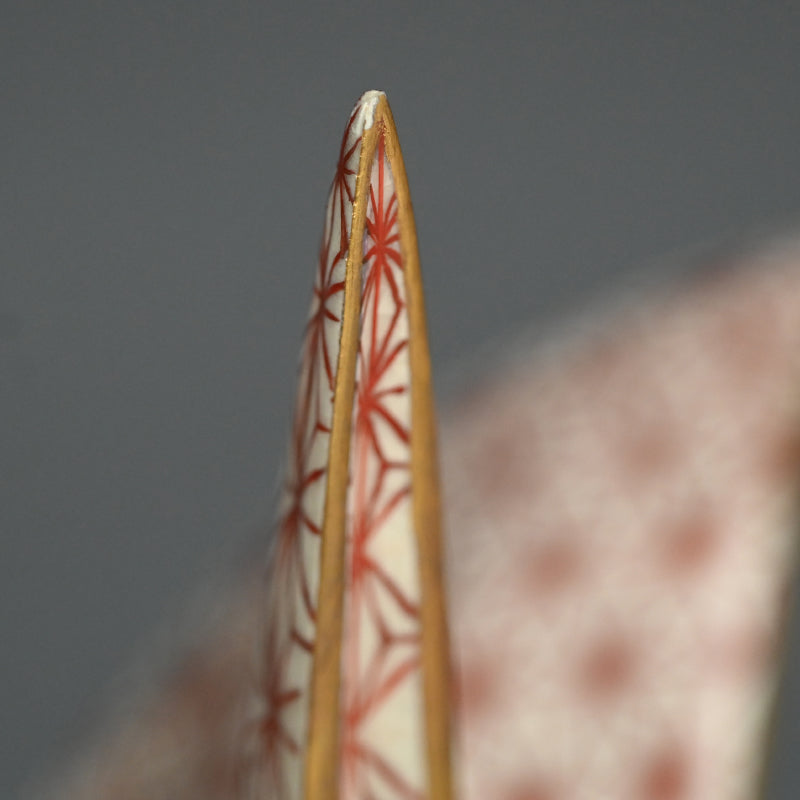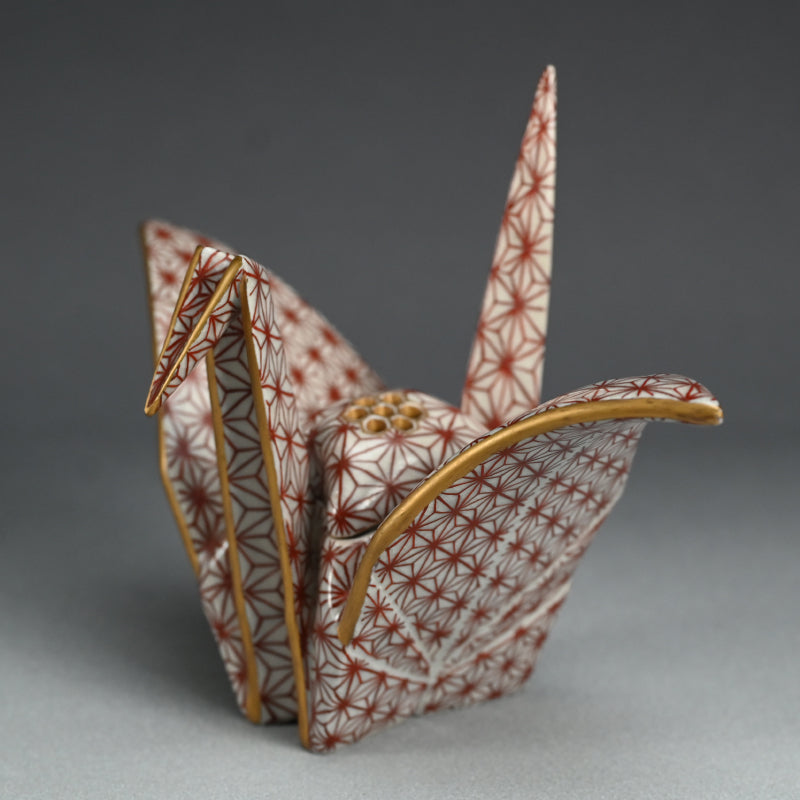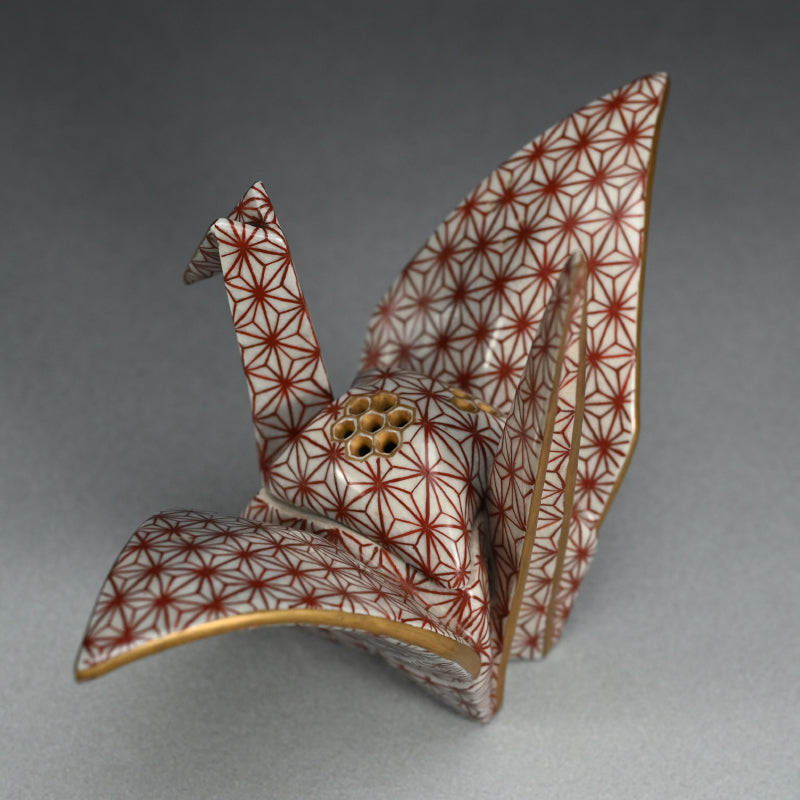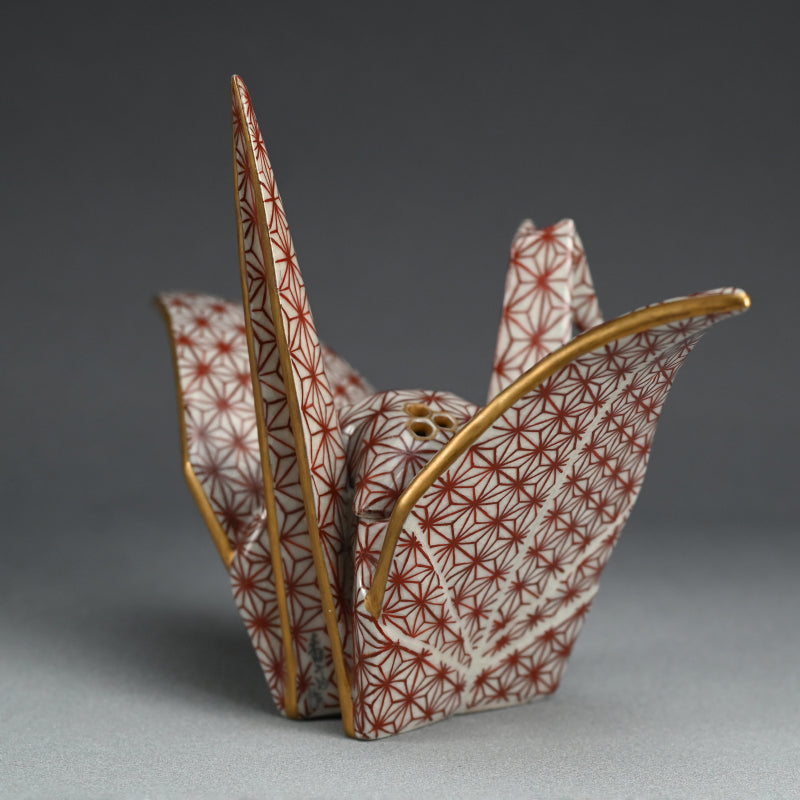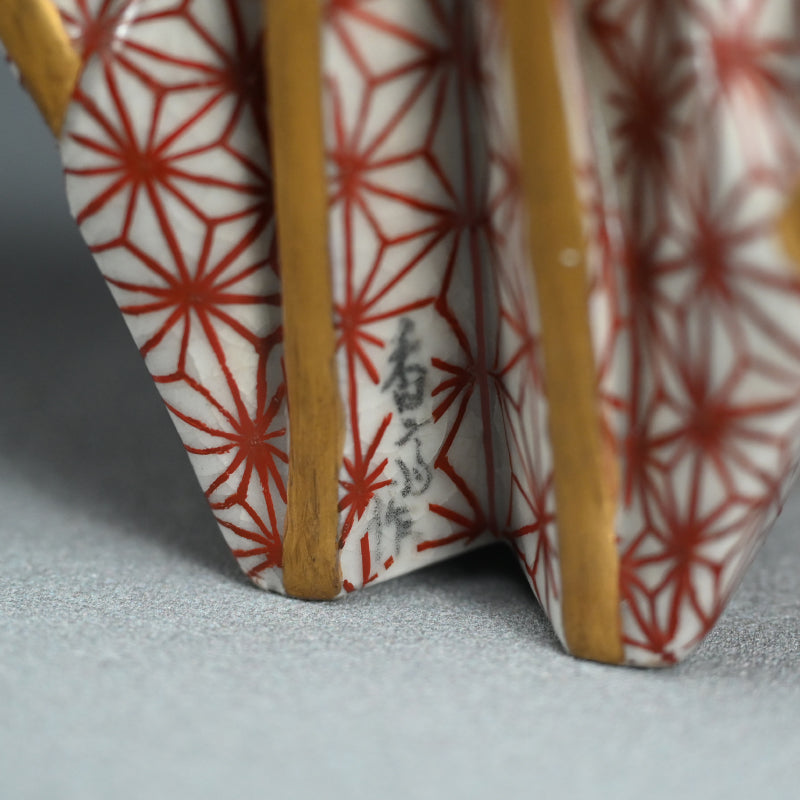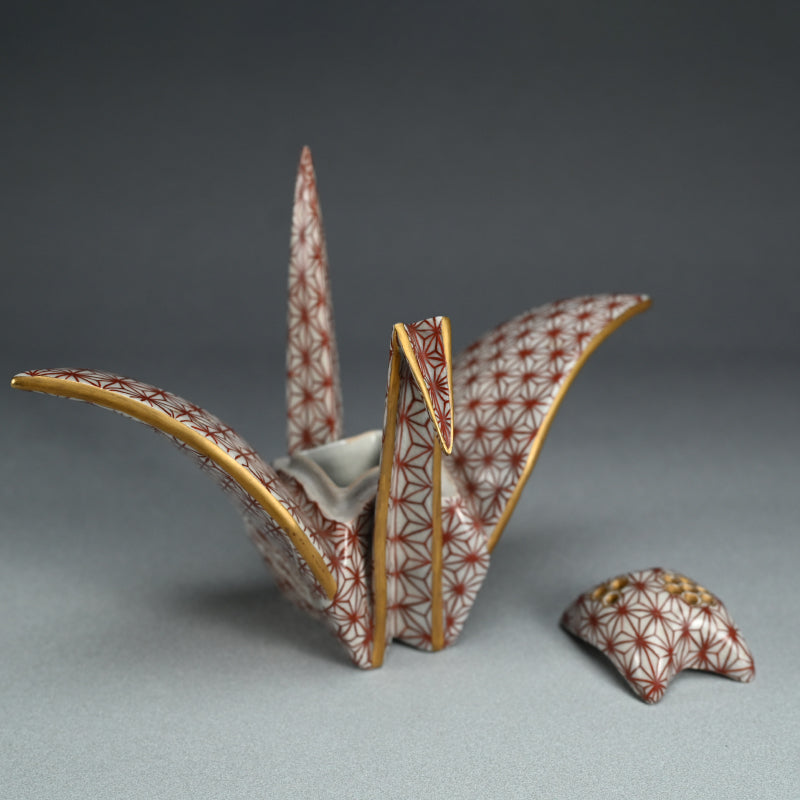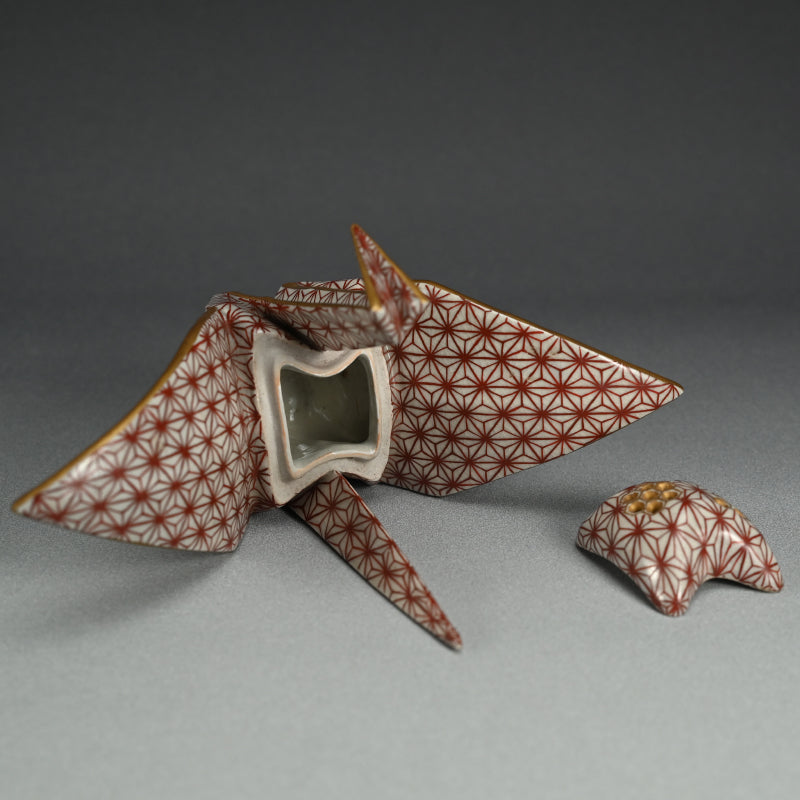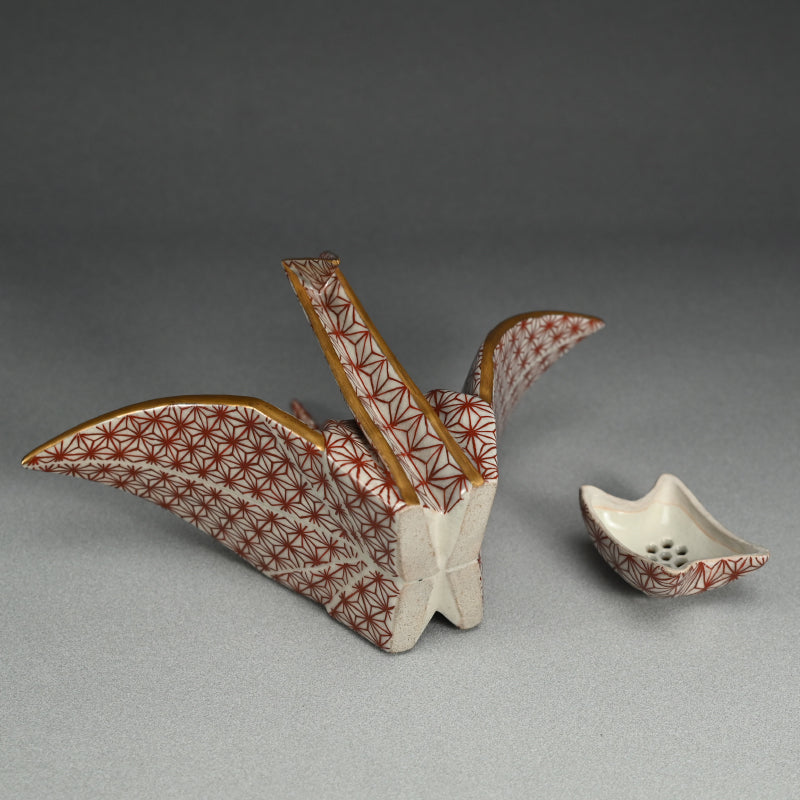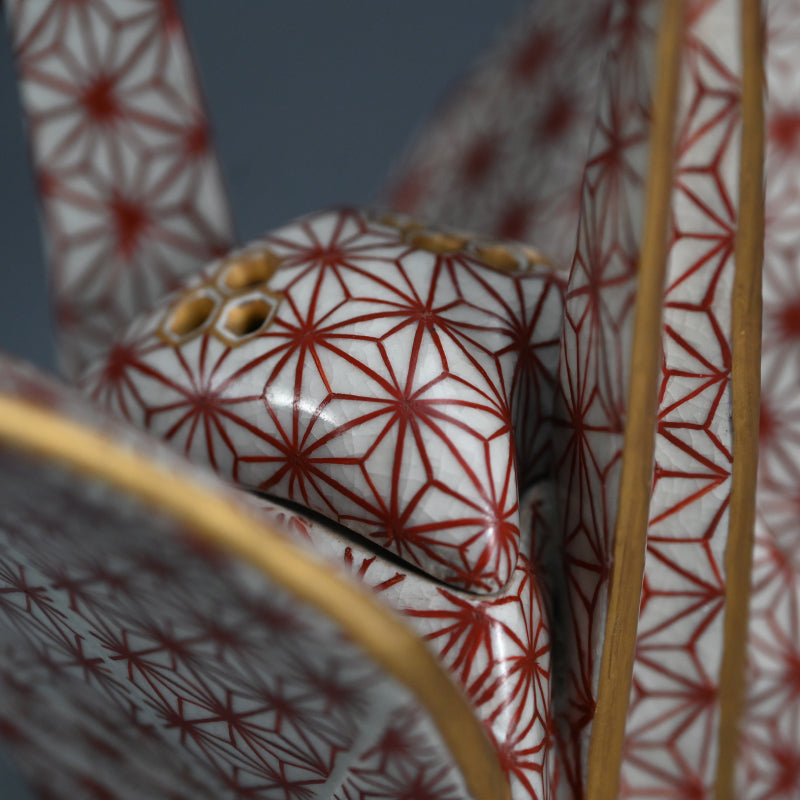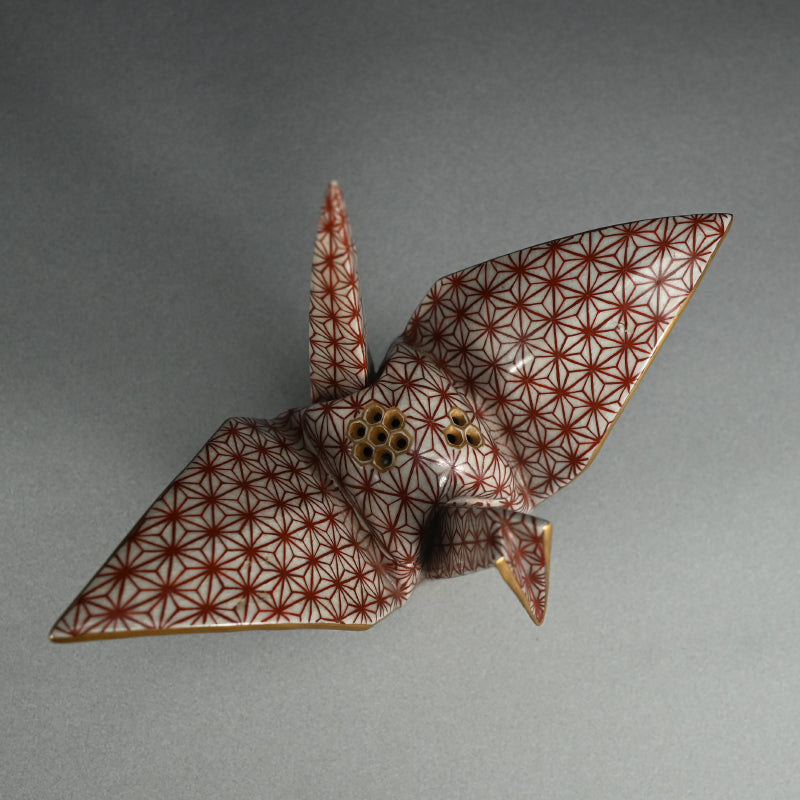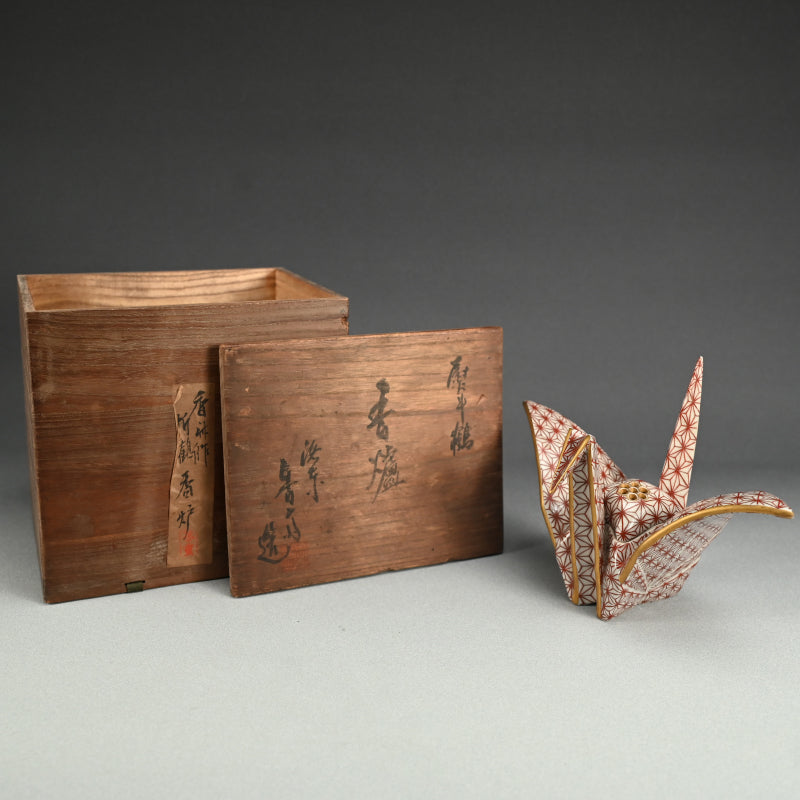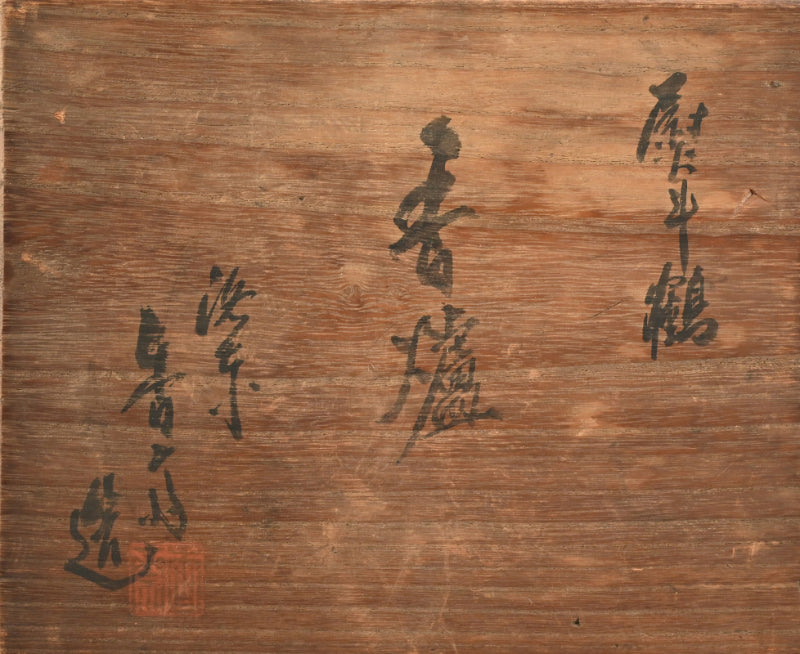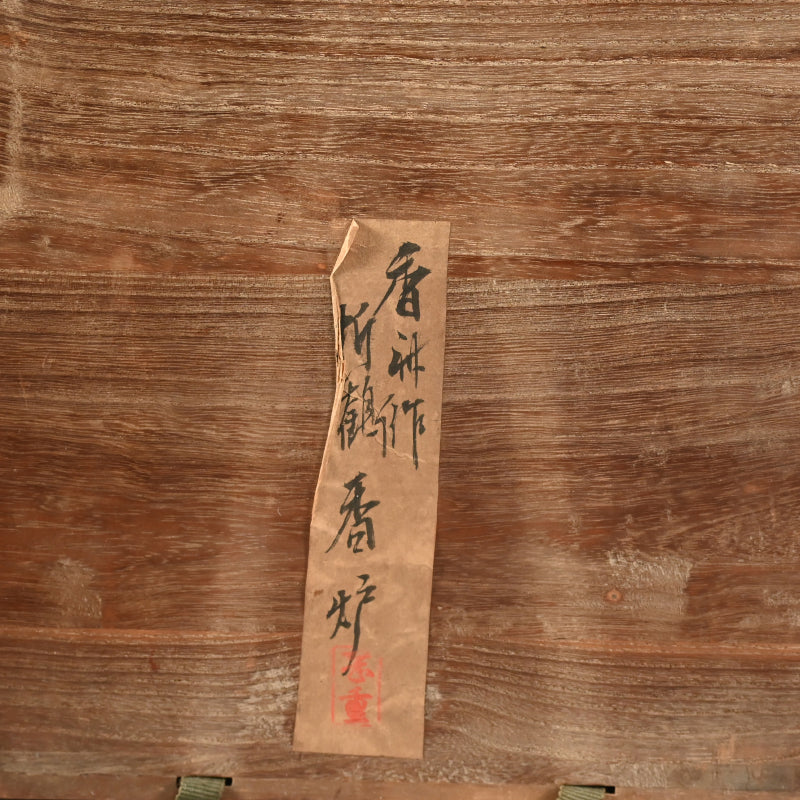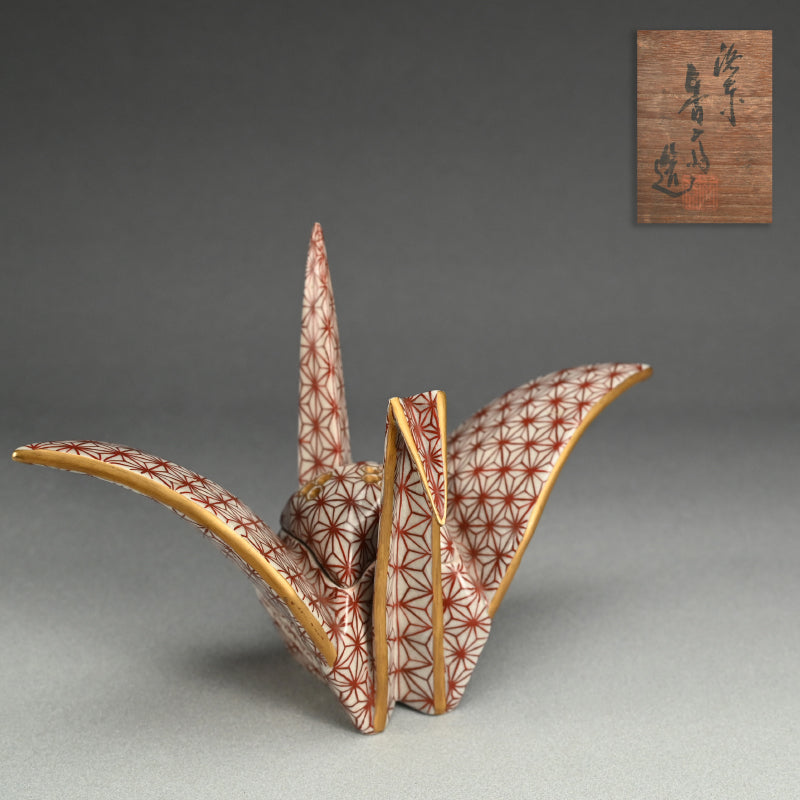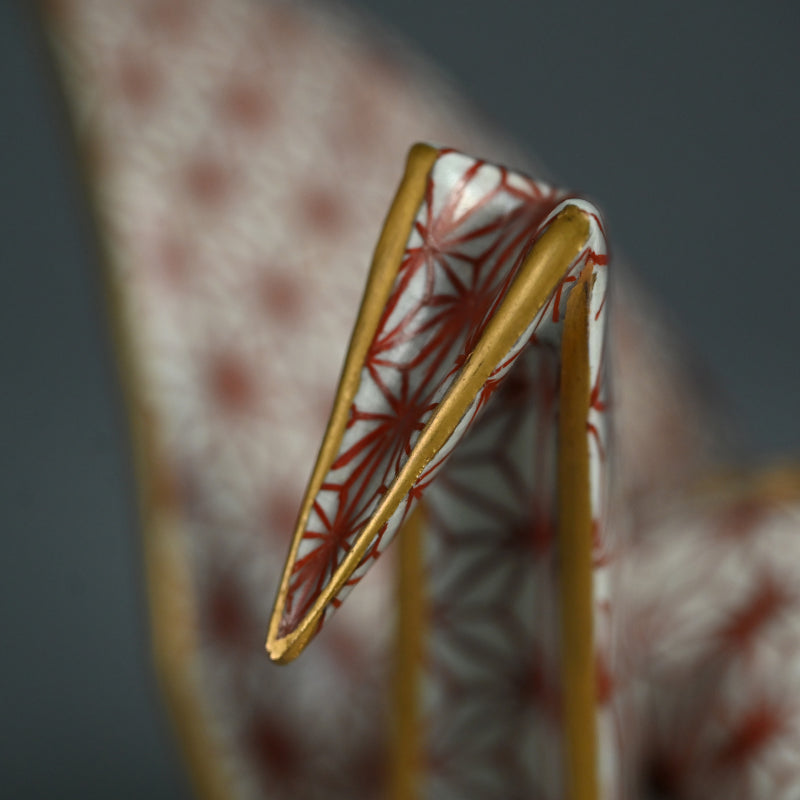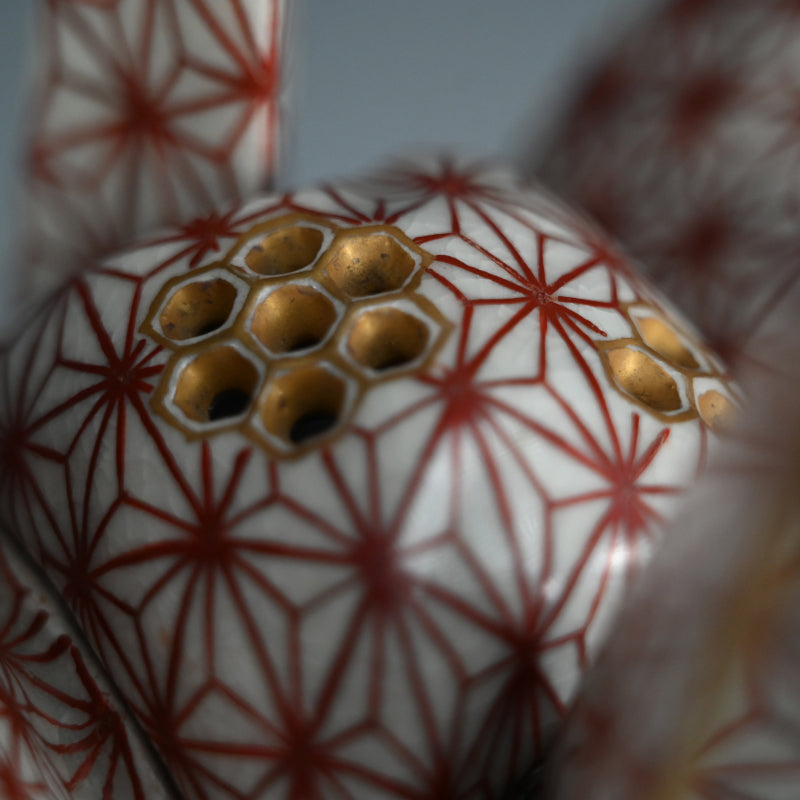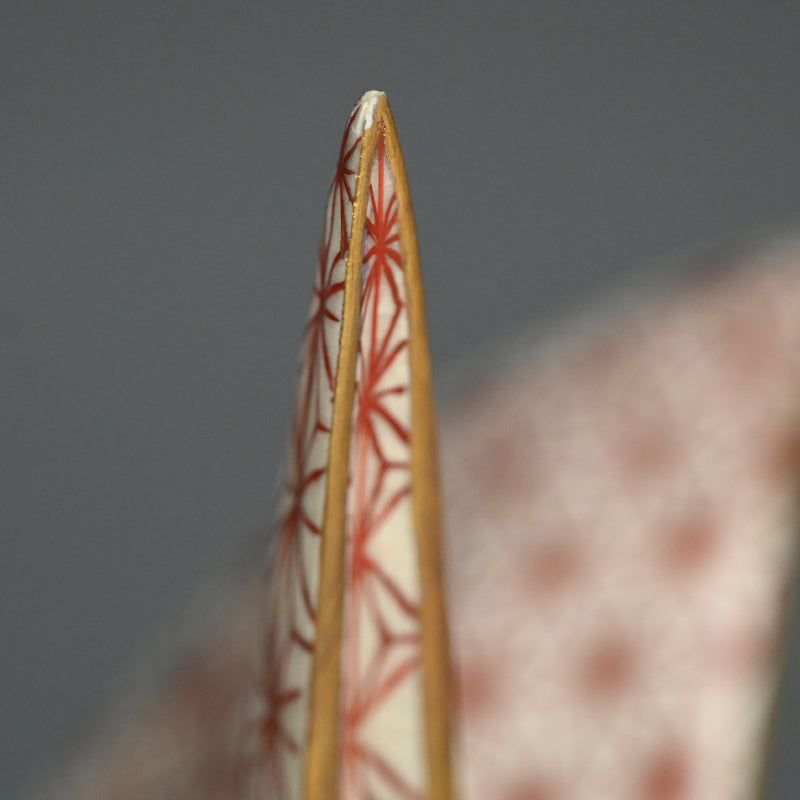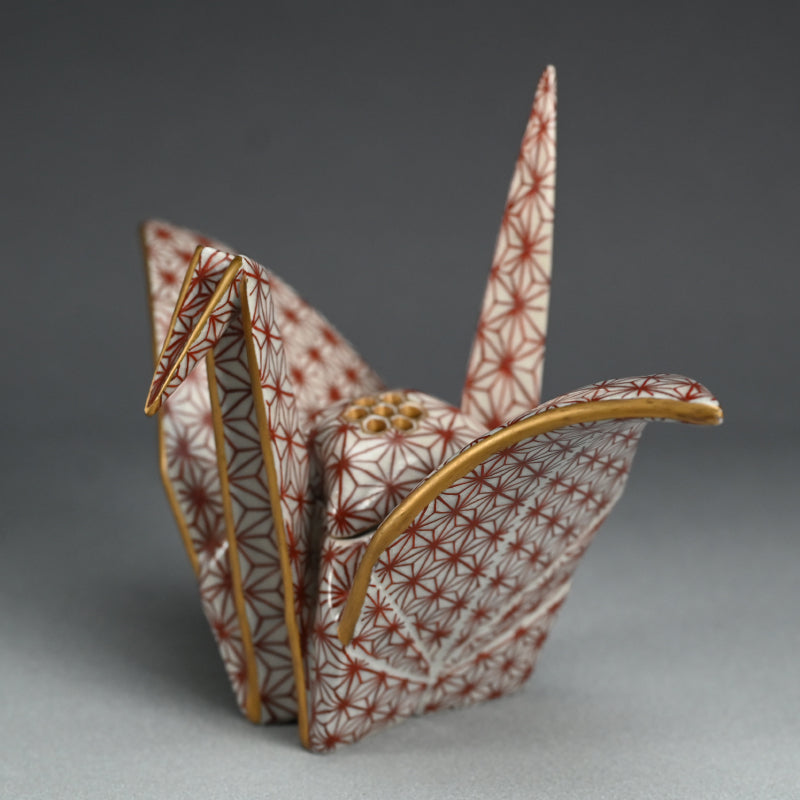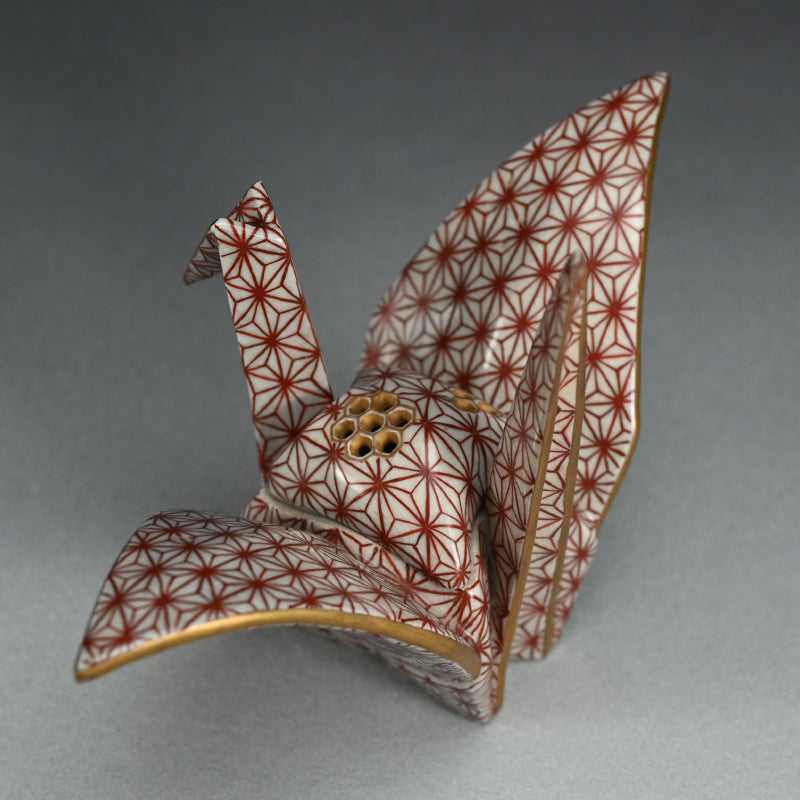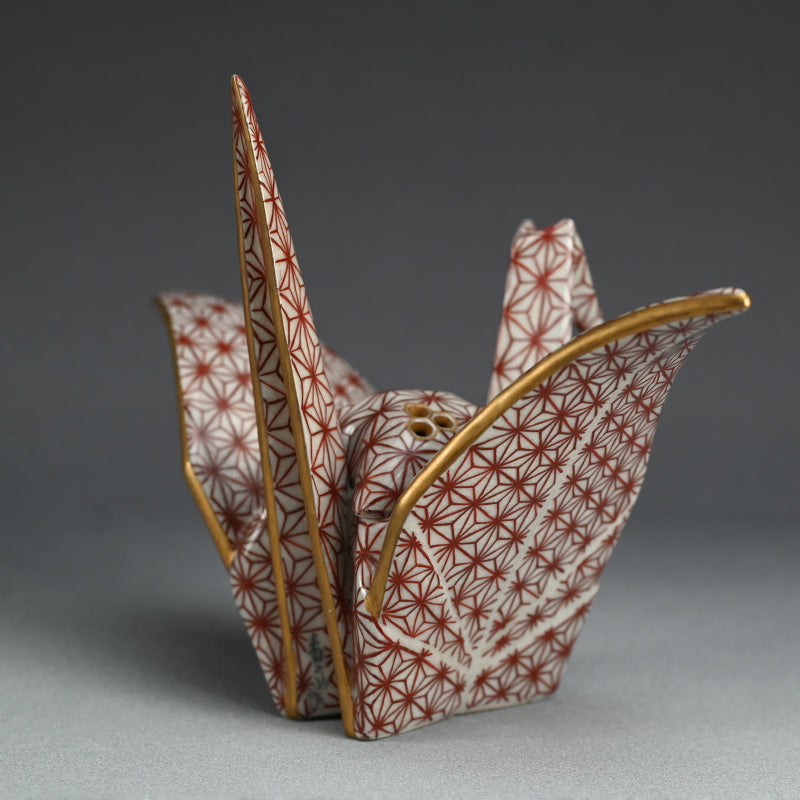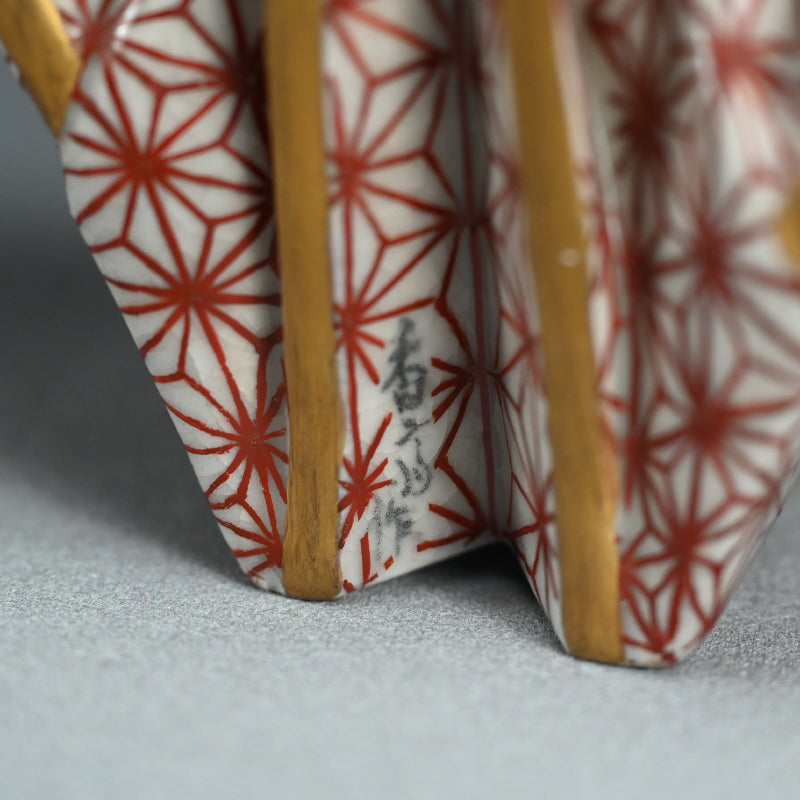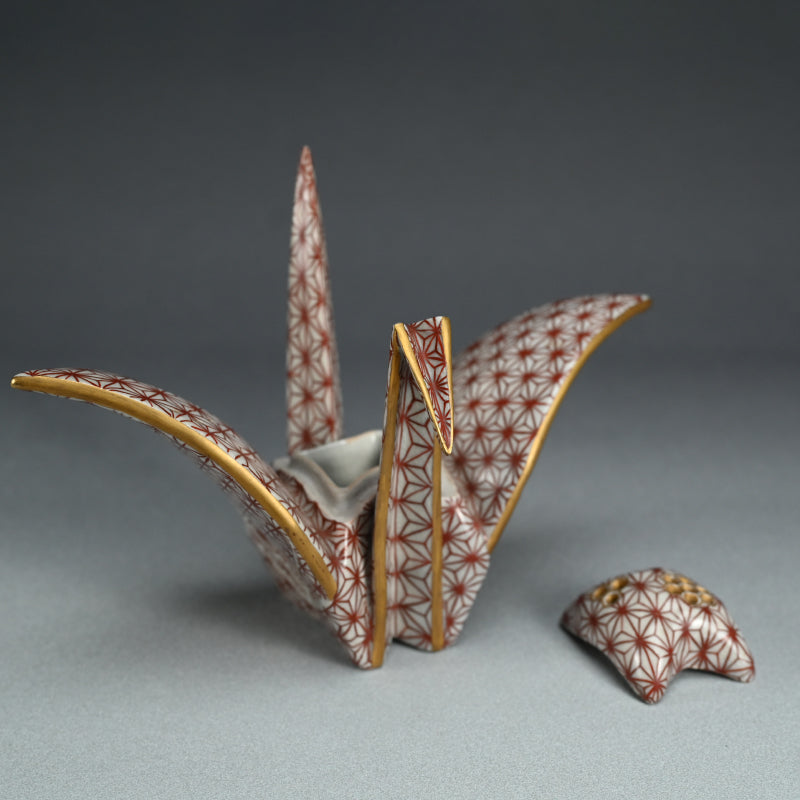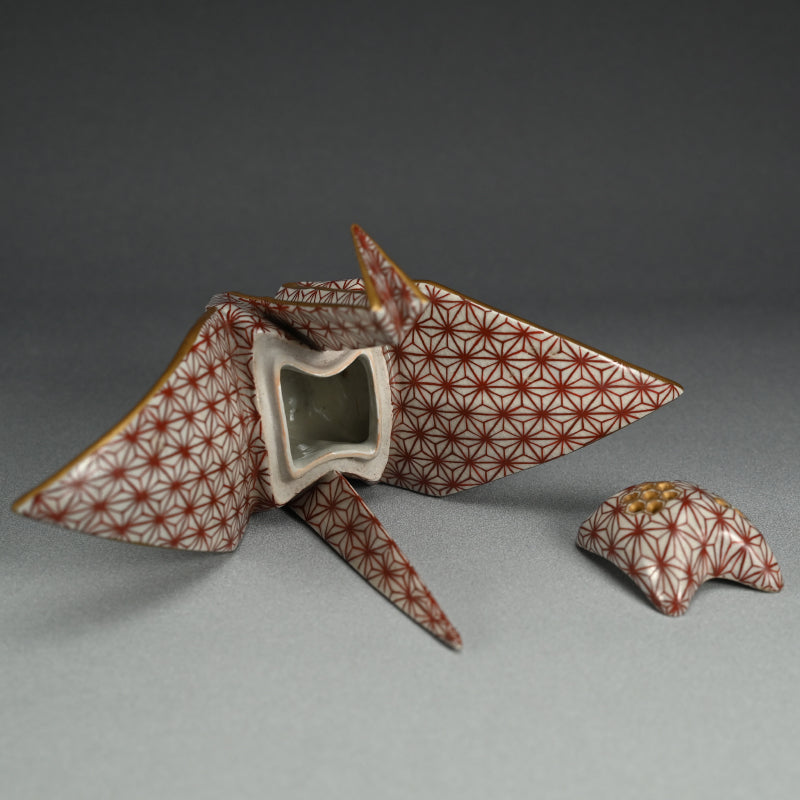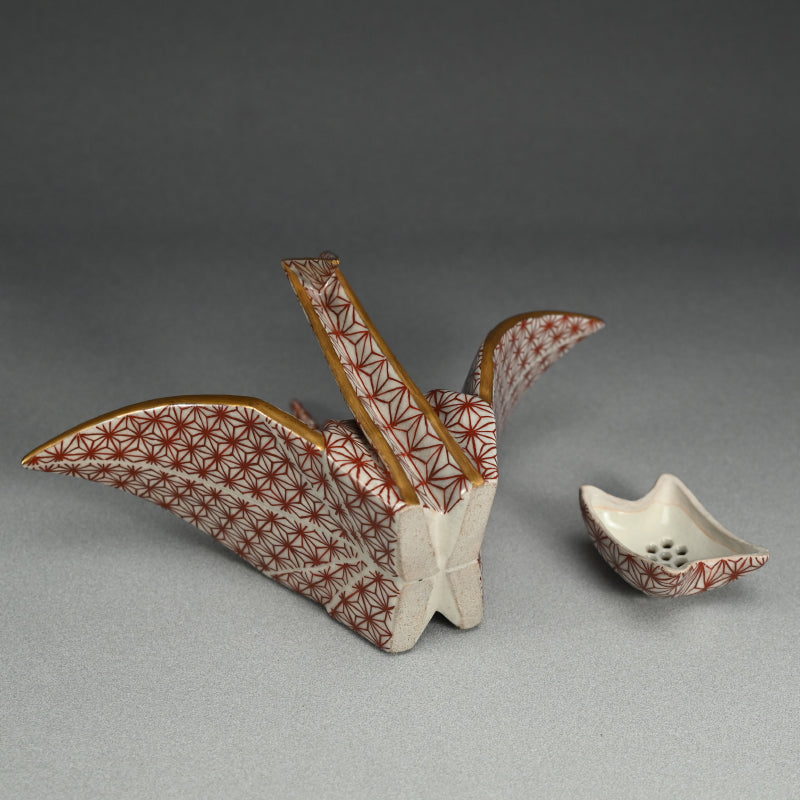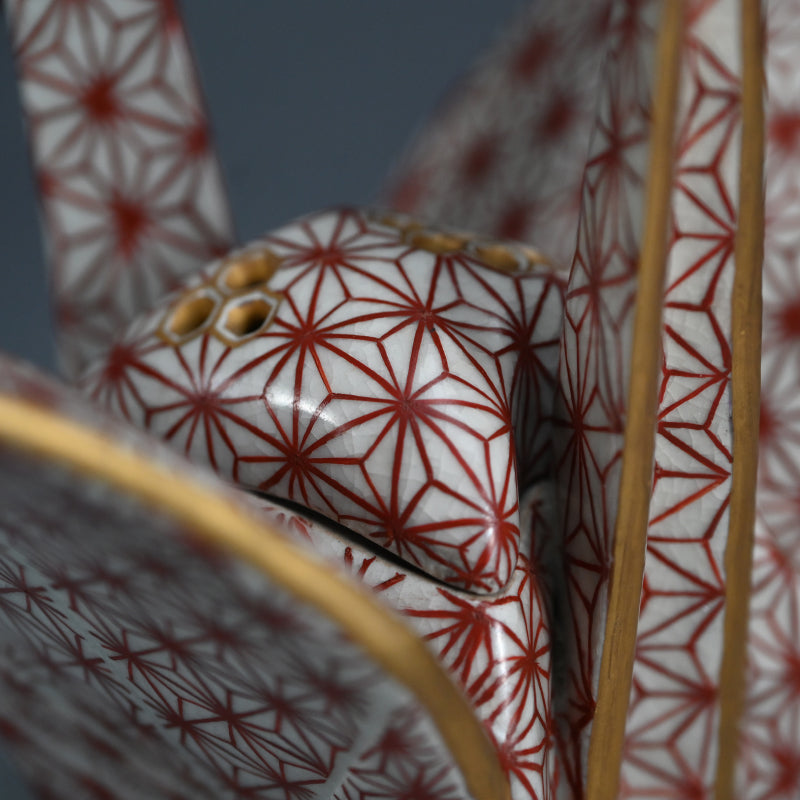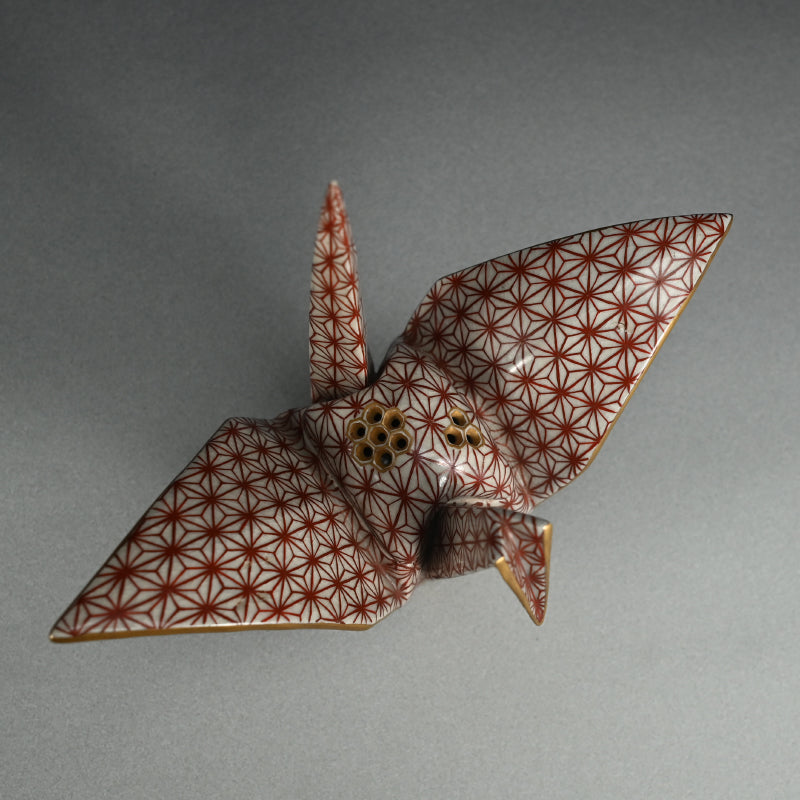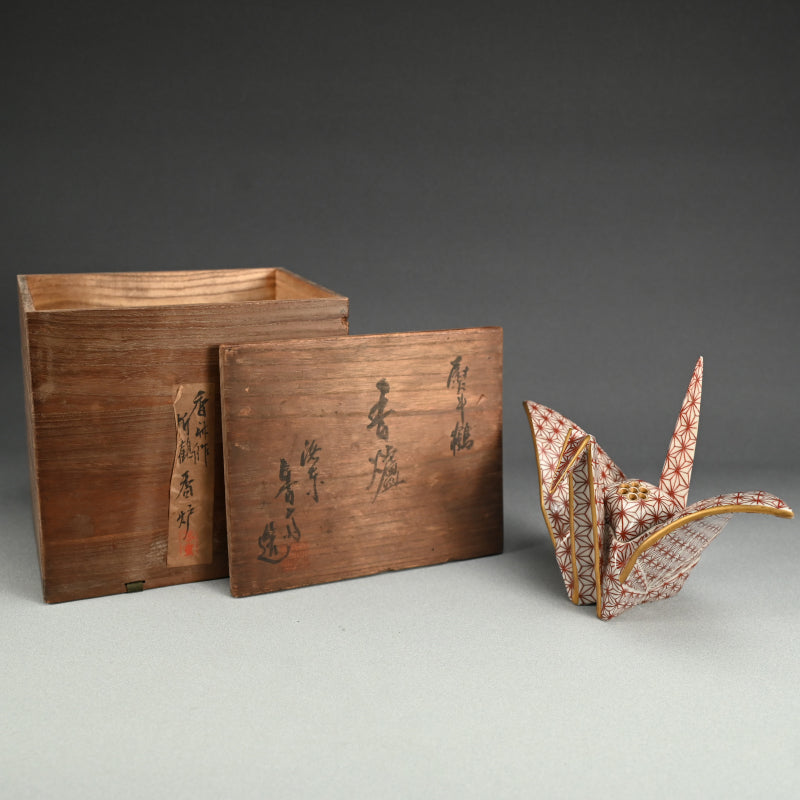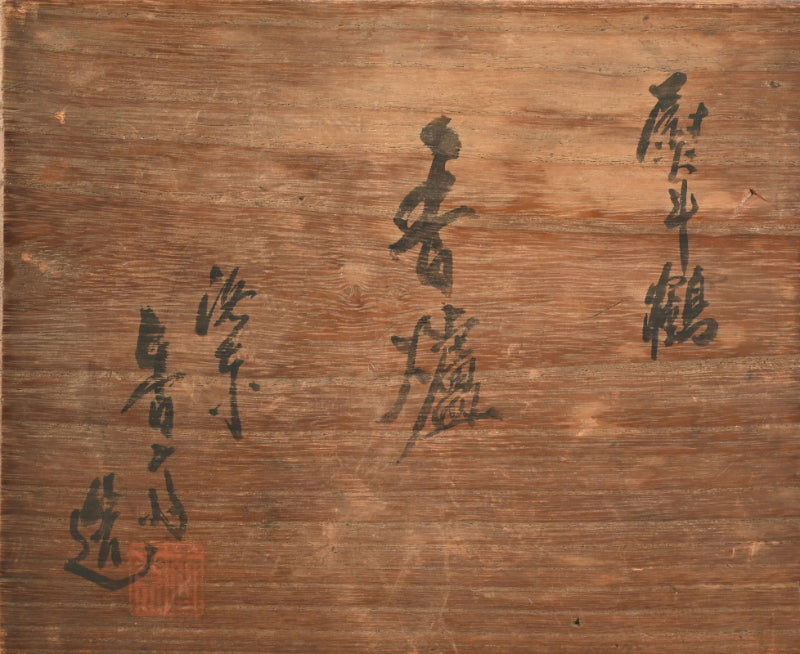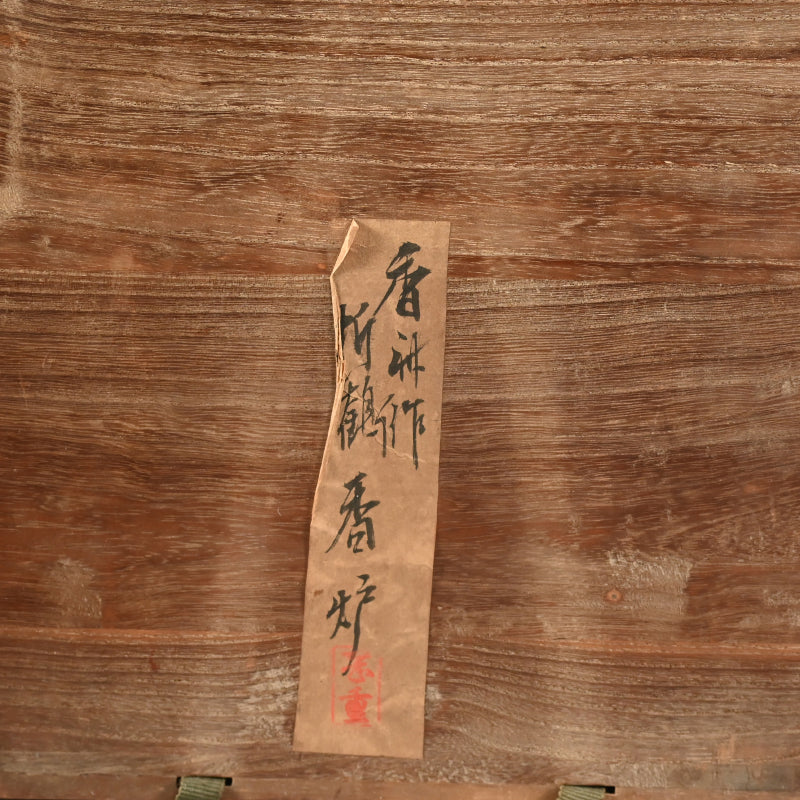Origami Crane-Shaped Koro ー宮川 香齋 “竹鶴香炉 熨斗鶴"
Origami Crane-Shaped Koro ー宮川 香齋 “竹鶴香炉 熨斗鶴"
Item Code: K722
Couldn't load pickup availability
A large Koro in the shape of a folded paper origami crane by Miyagawa (Makuzu) Kosai enclosed in the original signed wooden box titled Noshi-tsuru Koro. It is 26 x 14 x 18 cm (10 x 6 x 7 inches) and is in overall excellent condition. This is likely by the second generation Kosai.
The First-Generation Miyagawa Kōsai (1819–1865) was born into a family in Kyoto that specialized in yakitsugi (ceramic repair, a technique used to repair chipped ceramics by bonding them with low-fire glazes. In an era when ceramics were valuable, this method was in high demand as it was more affordable than lacquer-based repair). As the demand for yakitsugi had declined, with the increase in climbing Kilns in the city he shifted his focus to full-scale production of Kyo-yaki (Kyoto ware), creating numerous works inspired by both continental styles such as blue-and-white porcelain (sometsuke) and cobalt-blue (seika) as well as Traditional Japanese tea utensils for both Matcha and Sencha Tea. He demonstrated his potter’s wheel skills before Matsudaira Katamori, the Kyoto Military Commissioner and was thus awarded a seal reading "Jūsui Goseki" and began using the name "Kōsai" for the first time during the Kaei era (1848–1854). He later adopted an heir, who became the second-generation Kōsai. The Second-Generation Miyagawa Kōsai (1846–1922) trained under Miyagawa Chōzō, who had established a kiln in Makuzuhara. Alongside other notable apprentices like Toranosuke (who would later become the first-generation Miyagawa Kōzan), he honed his ceramic artistry. The lineage has continued through six generations. During the time of the fourth-generation Kōsai, the celebrated ceramic artist Kitaōji Rosanjin visited the workshop to receive instruction in pottery. Additionally, the fourth-generation Kōsai studied tea utensils under Mutesai Sōya, the 11th-generation head of the Hisada family, a prominent tea ceremony lineage. This marked the family’s full dedication to the production of tea ware.
Share
